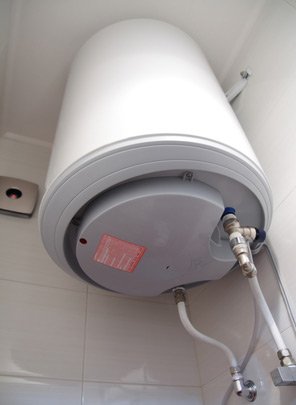What to Maintain Your Home's Hot Water System ProperlyImportant Advice on Maintaining Your Home's Hot Water System
What to Maintain Your Home's Hot Water System ProperlyImportant Advice on Maintaining Your Home's Hot Water System
Blog Article
This post below on the subject of Tips on Maintaining a Water Heater is without a doubt engaging. Don't miss it.

Warm water is important for day-to-day comfort, whether it's for a rejuvenating shower or washing dishes. To ensure your warm water system runs efficiently and lasts much longer, regular upkeep is essential. This article supplies useful pointers and insights on just how to maintain your home's warm water system to avoid disturbances and costly fixings.
Introduction
Maintaining your home's warm water system might seem overwhelming, however with a couple of easy actions, you can ensure it operates efficiently for several years to come. This guide covers whatever from recognizing your warm water system to DIY maintenance suggestions and knowing when to contact specialist assistance.
Relevance of Maintaining Your Hot Water System
Regular maintenance not just expands the life-span of your hot water system but also ensures it operates efficiently. Overlooking maintenance can result in lowered efficiency, greater power costs, and also early failure of the system.
Signs Your Hot Water System Needs Maintenance
Understanding when your hot water system needs attention can avoid major problems. Watch out for signs such as inconsistent water temperature level, odd sounds from the heater, or corroded water.
Understanding Your Hot Water System
Prior to diving into upkeep tasks, it's useful to recognize the basic elements of your warm water system. Generally, this includes the hot water heater itself, pipes, anode rods, and temperature level controls.
Monthly Maintenance Tasks
Normal monthly checks can aid catch small issues prior to they rise.
Flushing the Water Heater
Purging your hot water heater removes sediment buildup, enhancing performance and prolonging its life.
Checking and Replacing Anode Rods
Anode poles protect against rust inside the container. Checking and changing them when worn out is essential.
Checking and Readjusting Temperature Level Settings
Adjusting the temperature setups makes certain optimal efficiency and safety and security.
DIY Tips for Maintenance
You can carry out several maintenance tasks on your own to maintain your warm water system in leading condition.
Checking for Leakages
Routinely examine pipelines and links for leakages, as these can cause water damages and greater costs.
Checking Pressure Relief Valves
Evaluating the pressure relief valve guarantees it functions correctly and prevents excessive pressure buildup.
Insulating Pipes
Insulating warm water pipes decreases heat loss and can save power.
When to Call an Expert
While DIY upkeep is beneficial, some problems need expert competence.
Complicated Problems Needing Professional Help
Examples consist of significant leaks, electrical problems, or if your hot water heater is constantly underperforming.
Routine Expert Upkeep Conveniences
Professional upkeep can include extensive evaluations, tune-ups, and ensuring conformity with safety and security requirements.
Verdict
Normal maintenance of your home's hot water system is essential for performance, long life, and expense savings. By following these ideas and knowing when to look for expert help, you can make certain a trustworthy supply of hot water without unexpected disturbances.
How to Maintain an Instant Hot Water Heater
Before tinkering with your hot water heater, make sure that it’s not powered on. You also have to turn off the main circuit breaker and shut off the main gas line to prevent accidents. Also turn off the water valves connected to your unit to prevent water from flowing into and out of the appliance. 2. When you’re done, you have to detach the purge valves’ caps. These look like the letter “T” and are situated on either side of the water valves. Doing so will release any pressure that has accumulated inside the valves while at the same time avoid hot water from shooting out and burning your skin. 3. When the purge valves’ caps are removed, you have to connect your hosing lines to the valves. Your unit should have come with three hoses but if it didn’t, you can purchase these things from any hardware or home repair shops. You can also get them from retail stores that sell water heating systems. Read the user’s manual and follow it to complete this task properly. When the hosing lines are connected, open the purge port’s valves. 4. You should never use harsh chemical cleaners or solutions when cleaning your unit. Make use of white vinegar instead. It should be undiluted and you’ll probably use about 2 gallons. 5. Now flush your water heater. This task should probably take about 40 minutes. We can’t give you specific directions for this because the procedure is carried out depending on the type, model and brand of your heater. With that being said, refer to the user’s manual. 6. When you’re done draining the unit, you have to turn off the purge port valves again. Remove the hosing lines that you earlier installed on each of the water valves. Put the valve caps (purge port) back in their respective places and be very careful so as not to damage the rubber discs that are found inside these caps. 7. Now that everything’s back in place, check your user’s manual again to find out how to reactivate your water heating system. 8. Once it is working, turn one of your hot water faucets on just to let air pass through the heater’s water supply pipes. Leave the tap on until water flows smoothly out of it. https://www.orrplumbing.com/blog/2014/september/how-to-maintain-an-instant-hot-water-heater/

Hopefully you liked our excerpt on Tips For Maintaining Your Hot Water Heater. Many thanks for taking a few minutes to read through our post. Sharing is nice. Helping others is fun. Kudos for your time. Don't forget to pay a visit to our blog back soon.
Book An Estimate Now Report this page